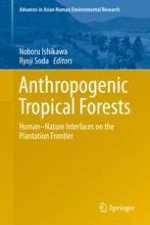2020 | OriginalPaper | Buchkapitel
22. Transitions in the Utilisation and Trade of Rattan in Sarawak: Past to Present, Local to Global
verfasst von : Yayoi Takeuchi, Atsushi Kobayashi, Bibian Diway
Erschienen in: Anthropogenic Tropical Forests
Verlag: Springer Singapore
Aktivieren Sie unsere intelligente Suche, um passende Fachinhalte oder Patente zu finden.
Wählen Sie Textabschnitte aus um mit Künstlicher Intelligenz passenden Patente zu finden. powered by
Markieren Sie Textabschnitte, um KI-gestützt weitere passende Inhalte zu finden. powered by
